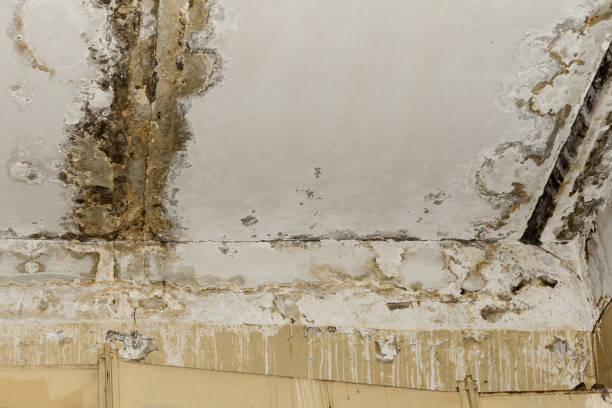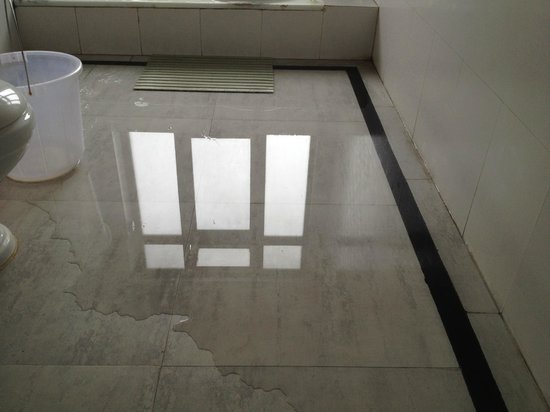Just How to Avoid Bathroom Water Damage
Just How to Avoid Bathroom Water Damage
Blog Article
What are your beliefs on How to Repair and Prevent Bathroom Water Damage??

Water damage often occurs in the shower room as a result of the water used day-to-day. Sometimes, the damage could be a little mold from the shower. Various other times, it's substantial damage on your floor. Whatever it is, it is always great to recognize the cause and avoid it prior to it takes place.
This overview will undergo a few of the typical sources of water damage in the bathroom. We will likewise analyze what you can do to stop these reasons from harming your bathroom. Let's dive in.
5 Typical Root Causes Of Water Damage in Washrooms
These are the usual factors you would have water damage in your bathrooms and how you can spot them:
Burst or Leaking Pipes
There are numerous pipes carrying water to different parts of your restroom. Some pipes take water to the bathroom, the sink, the taps, the shower, as well as numerous other places. They crisscross the little location of the washroom.
From time to time, these pipes might get rustic as well as ruptured. Various other times, human activity might trigger them to leakage. When this takes place, you'll locate water in the edges of your shower room or on the wall surface.
To detect this, watch out for bubbling walls, molds, or mildew. Call an expert emergency plumbing to fix this when it happens.
Cracks in your wall tilesv
Bathroom wall surface floor tiles have actually been specifically created for that function. They safeguard the wall from moisture from people taking showers. Nonetheless, they are not undestroyable.
Often, your restroom wall tiles split and also enable some wetness to seep into the wall surface. This might potentially destroy the wall surface if you do not take any type of action. If you notice a split on your wall surface ceramic tiles, fix it quickly. Do not wait up until it destroys your wall surface.
Overruning toilets and sinks
As human beings, often we make mistakes that can trigger some water damage in the restroom. For example, leaving your sink faucet on might cause overruning as well as damages to various other parts of the restroom with dampness.
Likewise, a defective commode might cause overruning. As an example, a damaged toilet handle or various other parts of the cistern. When this takes place, it can damage the floor.
As quickly as you discover an overflowing sink or commode, call a plumbing professional to help deal with it quickly.
Roofing Leaks
Occasionally, the issue of water damage to the bathroom may not come from the washroom. For instance, a roof covering leak can trigger damages to the shower room ceiling. You can spot the damage done by considering the water stains on the ceiling.
If you locate water spots on your ceiling, examine the roofing system to see if it's harmed. Then, call a specialist to assist address the problem.
Excess Dampness
It's amazing to have that lengthy shower as well as dash water while you dance around and also act like you're doing, but often these acts can cause water damage to your washroom.
Splashing water around can trigger water to visit corners and also form mold and mildews. See exactly how you spread out excess moisture around, as well as when you do it, clean it up to stop damage.
Final thought
Water damage to your washroom can be bothersome. Nonetheless, you can handle it if you avoid a few of the reasons mentioned in this guide. Call a specialist emergency plumbing if you observe any kind of severe damage.
How to Repair a Water-Damaged Wall in the Bathroom
All you need to know to repair bathroom wall water damage – from identifying the water source to finishing the repair professionally. If you don’t act quickly to resolve a water damage problem, you could find that it develops into a mold issue and/or cause structural damage to your home. Follow this guide to repair your bathroom before it's too late.
All you need to know to repair bathroom wall water damage
Water damage is a common household problem, and one that, if left unrepaired, can quickly lead to structural problems and health issues. The two most likely rooms where water damage may occur is the bathroom and the kitchen – where water is used often and there is high humidity.
What is water damage?
It is easy to think of water damage as caused by a flood or leaking tap or burst water pipe. However, when water damage is assessed, there are three main categories into which water falls (as classified by the American National Standards Institute). These categories are defined as:
Category 1 Water – ‘Clear Water’
This is sanitary water. There is usually no major threat to health by washing with this water, drinking it, or inhaling if it is streaming. Most water that enters your home will be category 1 water, while most water leaving your home will be either category 2 or 3 water. It may also come from melting snow, rainwater and water tanks.
Damage caused by this type of water can usually be repaired or restored, though this doesn’t mean that there are no potential health issues.
Category 2 Water – ‘Grey Water’
This is contaminated water – sometimes considerably so – and will cause illness if consumed or if it comes into contact with your skin. Water damage in this category is often caused by overflows from toilet bowls, and damage to washing machines and dishwashers. While damaged items might still be repaired or restored after damage by grey water, it is more difficult and more expensive to do so.
If the water damage in your home has been caused by grey water, it is advisable to have repairs made by professionals.
Over time, grey water will deteriorate and become black water.
Category 3 Water – ‘Black Water’
Category 3 water, also known as black water, is highly contaminated and a great risk to health. This may contain raw sewage, heavy metals, and other toxic substances. It will smell terrible.
If this is the water that has caused damage in your bathroom, do not touch it. Stop the water flowing if possible, seal the room and call the experts: it really isn’t worth the risk of ill health and disease that could be fatal. It is very unlikely that items can be repaired or restored if they have been damaged by black water.
https://www.porterscleaning.com/blog/how-to-repair-a-water-damaged-wall-in-the-bathroom/

How to Repair a Water-Damaged Wall in the Bathroom
All you need to know to repair bathroom wall water damage – from identifying the water source to finishing the repair professionally. If you don’t act quickly to resolve a water damage problem, you could find that it develops into a mold issue and/or cause structural damage to your home. Follow this guide to repair your bathroom before it's too late.
All you need to know to repair bathroom wall water damage
Water damage is a common household problem, and one that, if left unrepaired, can quickly lead to structural problems and health issues. The two most likely rooms where water damage may occur is the bathroom and the kitchen – where water is used often and there is high humidity.
What is water damage?
It is easy to think of water damage as caused by a flood or leaking tap or burst water pipe. However, when water damage is assessed, there are three main categories into which water falls (as classified by the American National Standards Institute). These categories are defined as:
Category 1 Water – ‘Clear Water’
This is sanitary water. There is usually no major threat to health by washing with this water, drinking it, or inhaling if it is streaming. Most water that enters your home will be category 1 water, while most water leaving your home will be either category 2 or 3 water. It may also come from melting snow, rainwater and water tanks.
Damage caused by this type of water can usually be repaired or restored, though this doesn’t mean that there are no potential health issues.
Category 2 Water – ‘Grey Water’
This is contaminated water – sometimes considerably so – and will cause illness if consumed or if it comes into contact with your skin. Water damage in this category is often caused by overflows from toilet bowls, and damage to washing machines and dishwashers. While damaged items might still be repaired or restored after damage by grey water, it is more difficult and more expensive to do so.
If the water damage in your home has been caused by grey water, it is advisable to have repairs made by professionals.
Over time, grey water will deteriorate and become black water.
Category 3 Water – ‘Black Water’
Category 3 water, also known as black water, is highly contaminated and a great risk to health. This may contain raw sewage, heavy metals, and other toxic substances. It will smell terrible.
If this is the water that has caused damage in your bathroom, do not touch it. Stop the water flowing if possible, seal the room and call the experts: it really isn’t worth the risk of ill health and disease that could be fatal. It is very unlikely that items can be repaired or restored if they have been damaged by black water.
https://www.porterscleaning.com/blog/how-to-repair-a-water-damaged-wall-in-the-bathroom/
As a passionate person who reads on How to Repair and Prevent Bathroom Water Damage?, I assumed sharing that chunk was essential. Liked our piece of writing? Please share it. Help another person find it. Thanks so much for your time invested reading it.
Services Report this page